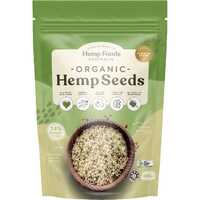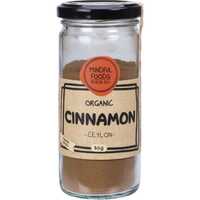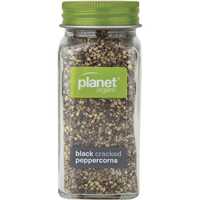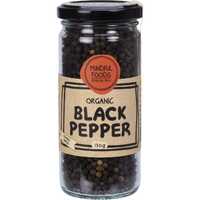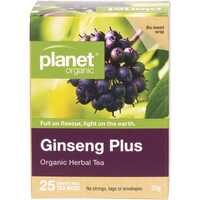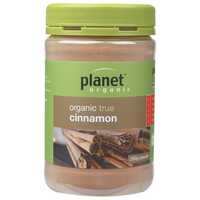The world is full of amazing foods, with exotic ingredients found in every corner of the Earth. From fruits and vegetables to grains and meats, food is a key part of cultural identity. Herbs and spices have been particularly influential in shaping human civilisations. As explorers and merchants travelled far and wide searching for new flavours, global trade routes were established and new relationships developed between nation-states.
Let's look at three popular herbs and spices and how they changed the world.
What Exactly are Herbs & Spices
Before we look at individual ingredients and the effect they've had, it's important to understand exactly what herbs and spices are. While they're both derived from plants, and both full of flavour, they describe different parts of a plant.
- A herb is the green, leafy part of the plant. Herbs can be eaten fresh or dried, with examples including rosemary, basil, thyme, parsley, and oregano. Herbs are typically described as non-woody plants.
- A spice can come from many parts of the plant, including the root, stem, seed, or bark. Spices are often dried, with examples including cinnamon, ginger, and turmeric. Spices are often the woody part of the plant.
This distinction is correct, but the difference between herbs and spices is not always clear-cut. For example, some plants provide both herbs and spices, including coriander and dill. With coriander or cilantro, the leaf of the plant is considered a herb and the seed is a spice.
How Herbs & Spices Have Shaped the World
Herbs and spices have influenced many aspects of human history. The quest for novel flavours was a chief inspiration for early explorers, who opened up trade routes and forged relationships with people in far-flung destinations. More than any other category of food, herbs and spices have altered the course of international relations.
From ancient Arab traders to the classic Greek and Roman eras, the appetite for new flavours is nothing new. Secret overland trade routes were established during ancient and medieval periods, changing the economies of Europe, India, and countless other nations. Portuguese explorers opened everything up around 1500, as Asia, Africa, and Europe became increasingly connected via the sea.
The flow of herbs and spices across the world had a massive influence on economics and culture, with countries needing to develop infrastructure to protect trade routes. In many ways, this represented the start of globalisation. The collective hunger for new flavours changed power dynamics between peoples, affecting everything from colonisation to class struggle. While they're not necessary for survival, and they might even be considered trivial, herbs and spices really have changed the world.
The following three herbs and spices had a bigger influence than most:
Cinnamon
Few foods have changed the world as much as cinnamon. This well-known spice comes from the inner bark of several tree species, all of which are in the Cinnamomum genus. Cinnamon is an incredibly versatile ingredient used as a condiment and flavouring additive in many dishes. From savoury main meals to sweet desserts, snacks, and teas, there is nothing in the world quite like it.
With its distinctive and much-loved taste, cinnamon has been a global favourite for a long time. Along with cassia, its cheaper form, there's evidence of cinnamon being traded globally for at least 3,500 years. It was listed on The Ebers Papyrus, an Egyptian scroll listing popular plant medicines of the time. Cinnamon is native to southeastern Asia and China, however, so trade routes must have already been established.
Trade in cinnamon and other spices grew during the Roman Empire. Cinnamon was used as a medicine, perfume, and flavouring agent, and it was even used as a gift between monarchs and wealthy classes. In the common era, overland trade with India was opened up by early merchants in Arabia and Persia. A little later, the maritime republics of Europe opened up the European market thanks to trade to the Middle East.
The quest for a cheaper and more plentiful source of cinnamon led to world exploration in the 15th century. Along with other spices, it was the chief motivation behind Christopher Columbus's most famous voyage. This led to nothing less than the discovery of the new world. In 1498, Portuguese explorer Vasco da Gama made the first sea voyage to India and Sri Lanka, and once again he was searching for cinnamon. With a more direct trade route now established, spices like cinnamon became much cheaper and more plentiful.
From a nutritional perspective, cinnamon is full of beneficial plant compounds. It has potent antioxidant and anti-inflammatory properties, which may help to fight a number of diseases. Cinnamon has a high concentration of polyphenols, with these micronutrients helping to protect the body against oxidative stress and associated pathologies. Among other things, cinnamon has been studied in relation to heart disease, diabetes, cancer, and Parkinson's disease.
Black pepper
It might be ubiquitous today, but black pepper was once a valuable commodity. Just like cinnamon, it also had a massive impact on global relations. Around 1000 BC, black pepper started moving from India to Egypt, probably via Indonesia. The Arabs had control of the pepper trade, with the spice mostly arriving via Red Sea ports. Ancient Greek and Roman cultures were also involved with trading pepper, with many recipes in the 1st-century Roman cookbook Apicius making use of the spice.
When the Romans took over Egypt in 30 BC, they developed a trade network with Asian nations. Indian boats sailed across the ocean to Indonesia, where they traded pepper for cloves and nutmeg. The spice was used as flavouring in a variety of dishes, and due to its high value, it was even used as currency. Access to pepper became more difficult when the Roman Empire fell, but demand continued along with other spices like ginger, cloves, and nutmeg.
During the Crusades and the European Age of Discovery, trade in black pepper took on increasing importance. The Italian maritime republics of Venice and Genoa controlled trade routes from the 11th to the 15th centuries, and the price of pepper grew as demand outgrew supply. After early influence by the Portuguese, The Dutch and English East India Companies took control of the spice market in the 17th century, with all pepper now coming through them.
Over the next couple of centuries, there was a decline in the European pepper market. As the French refined their cuisine based on local vegetables, herbs, and mushrooms, the wider population became less interested in pepper and other exotic spices. Today, black pepper can be found in almost every supermarket and pantry on Earth. While the taste hasn't changed, pepper's transition from "black gold" to everyday seasoning highlights the ever-changing nature of the world.
Nutritionally, black pepper has a number of antioxidant and anti-inflammatory properties. The main active compound in black pepper is piperine, which is a potent antioxidant known to prevent free radical damage. Piperine also helps to reduce inflammation, which is an underlying factor in conditions such as heart disease, diabetes, and cancer. This powerful compound has the ability to regulate multiple signalling molecules and pathways, offering therapeutic benefits for a wide range of conditions.
Ginseng
Ginseng isn't as popular in the West as cinnamon or pepper, but it's been just as influential. Native to China, this popular herb was one of the original items traded on the ancient Silk Route. It became popular in regions across Asia, where it was used as a food and taken as a cure for several ailments. From treating stress and fatigue to providing energy and focus, ginseng has long been appreciated as a supertonic.
Ginseng has been used for at least 2,000 years, and probably for many more. It's always been an important traded asset, with China getting much of its supply from ancient Korea as far back as the North and South Dynasties. This popular herb facilitated economic relations between ancient Asian powerhouses, including China, Korea, and Japan. It was a vital source of income for ancient Korea, and a substantial part of China’s tribute trade during the Qing dynasty.
While ginseng hasn't always been popular in the West, it was introduced into Europe during the early Middle Ages by Arabian merchants. Arab navigators brought ginseng back from China in the 9th century, and healers combined it with other herbs to treat various ailments. In more recent times, from the 18th century, ginseng has helped to foster Chinese-Canadian and Chinese-American relations. As people in the West learn more about this wonderful plant, we can expect trade to grow in the coming decades.
The root of the ginseng plant has a number of medicinal properties, containing polysaccharides, saponins, volatile oil, trace elements, organic acid, and various proteins. In traditional medicine, ginseng is known to replenish Qi, which is basically the energy of life. This powerful herb has also been studied in a laboratory setting, with modern pharmacology research revealing notable effects on the immune, central nervous, and cardiovascular systems.
If you're looking for a great source of quality herbs and spices, Healthy Being would love to help. We have dried herbs, fragrant spices, herbal teas, and so much more!


 Certified Organic
Certified Organic Vegan Friendly
Vegan Friendly  Vegetarian
Vegetarian Organic Ingredients
Organic Ingredients Dairy Free
Dairy Free Gluten Free
Gluten Free Keto Friendly
Keto Friendly
























